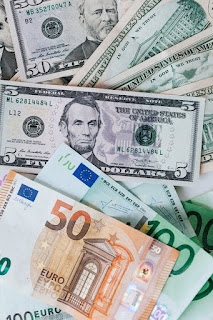Fact Check: Money Supply
In macroeconomics, the money supply (or money stock) refers to the total volume of money held by the public at a particular point in time in an economy. There are several ways to define "money," but standard measures usually include currency in circulation and demand deposits (depositors' easily accessed assets on the books of financial institutions). The central bank of each country may use a definition of what constitutes money for its purposes.
Money supply data is recorded and published usually by the government or the central bank of the country. Public and private sector analysts monitor changes in the money supply because of the belief that such changes affect the price levels of securities, inflation, the exchange rates and the business cycle.
The relationship between money and prices has historically been associated with the quantity theory of money. There is strong empirical evidence of a direct relationship between the growth of the money supply and long-term price inflation, at least for rapid increases in the amount of money in the economy. For example, a country such as Zimbabwe which saw extremely rapid increases in money supply also saw extremely rapid increases in prices (hyperinflation). This is one reason for the reliance on monetary policy as a means of controlling inflation.
Commercial banks play a role in the process of money creation, especially under the financial-reserve banking system used throughout the world. In this system, CREDIT is created whenever a bank gives out a new loan. This is because the loan, when drawn on and spent, mostly finishes up as a deposit in the banking system (an asset), which is counted as part of money supply (and offsets the LOAN -- which has yet to be repaid). After putting aside a part of these deposits as mandated bank reserves, the balance is available for the making of further loans by the bank. This process continues multiple times, and is called the multiplier effect.
As the iterations continue, this multiplier is balanced (or nullified) by the equal and cumulative value of the loans, between the banks, creating a zero sum gain, and annulling the "money creator" claims or fears, that generally do not include or provision for reality of reciprocating balancing, and net-offsets in their calculations, excluding double entry (balanced book) accounting principles.
This new money, in net terms, make up the non-MD component in M1-M3 statistics. In short, there are two types of money in a fractional-reserve banking system:
- Central bank money - obligations of a central bank, including currency and central bank depository accounts.
- Commercial bank money - obligations of commercial banks, including checking accounts and savings accounts.
In the money supply statistics, central bank money is MB while the commercial bank money is divided up into the M1-M3 components. Generally, the types of commercial bank money that tend to exist in larger amounts are categorized in M2 and M3, with M3 having the largest.
In the United States, a bank's reserves consist of US currency held by the bank (also known as "vault cash") plus the bank's balances in Federal Reserve accounts. For this purpose, Federal Reserve accounts are interchangeable (both are obligations of the Fed). Reserves may come from any source, including the federal funds market, deposits by the public, and borrowing from the Fed itself.
A reserve requirement is a ratio a bank must maintain between deposit liabilities and reserves. Reserve requirements do not apply to the amount of money a bank may lend out. The ratio that applies to bank lending is its capital requirements.
x------x
Picture from Pexels.




Comments
Post a Comment